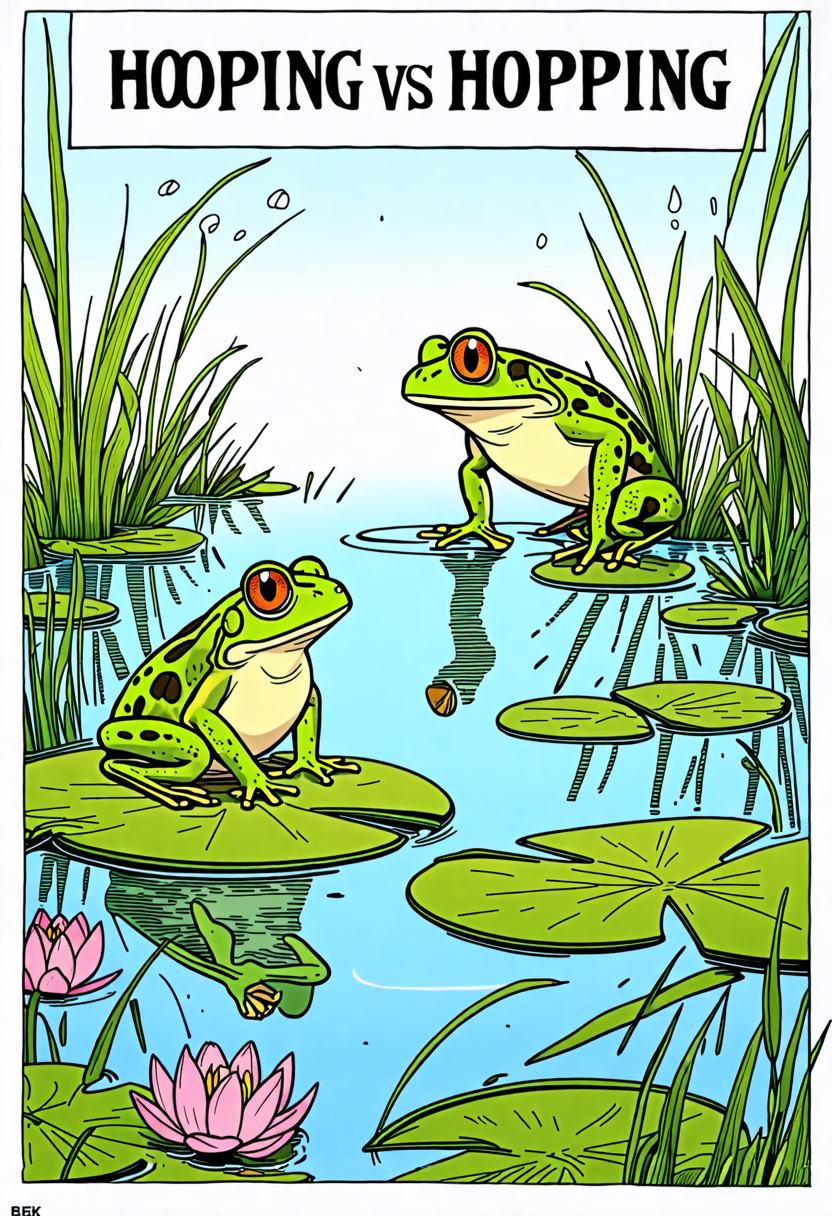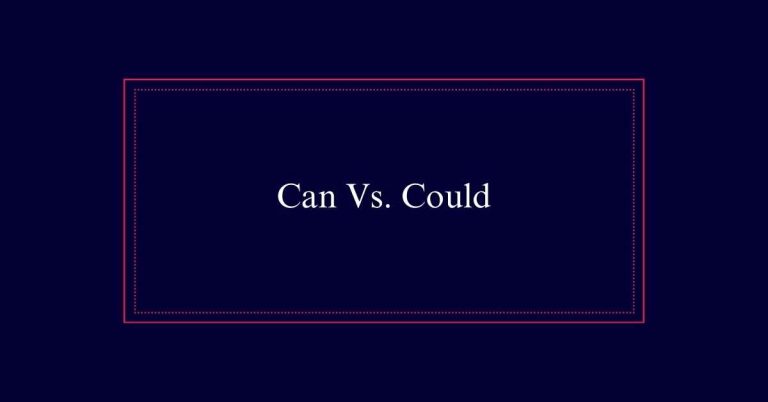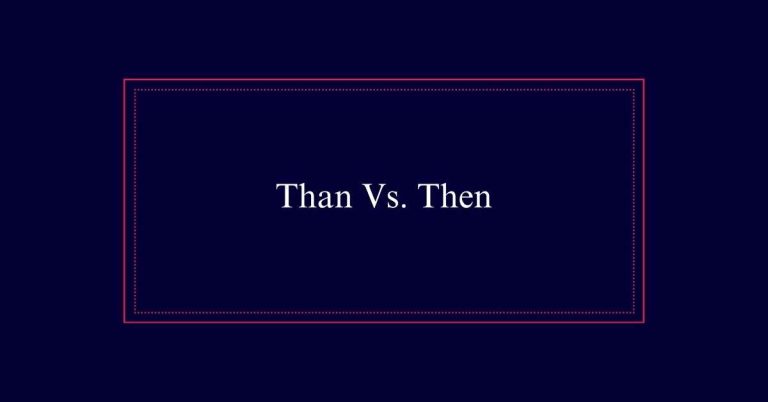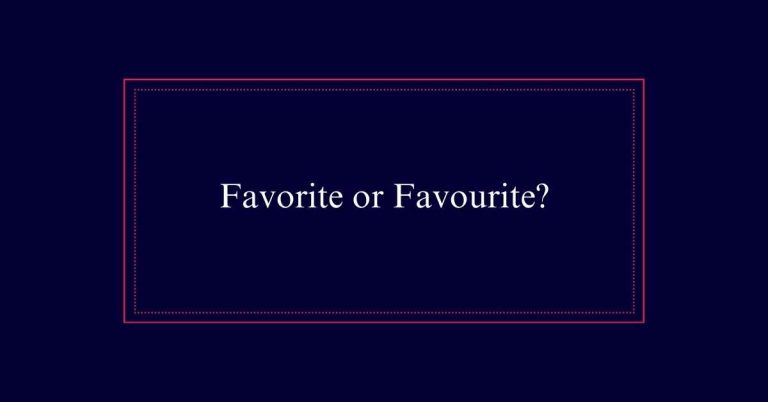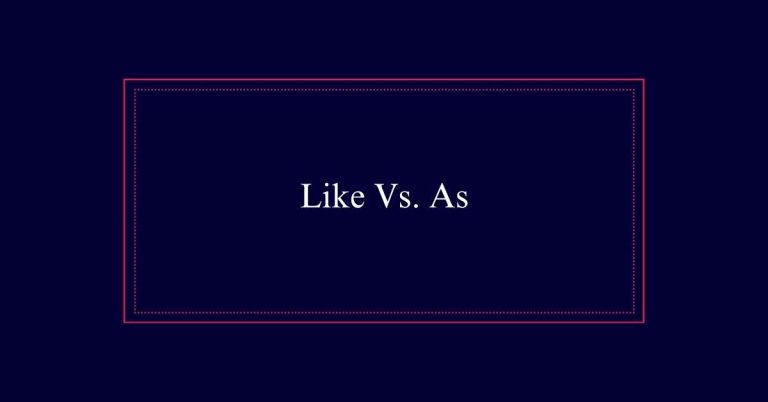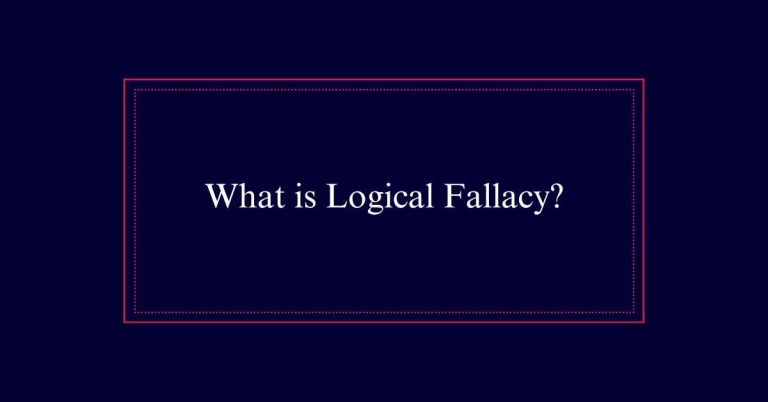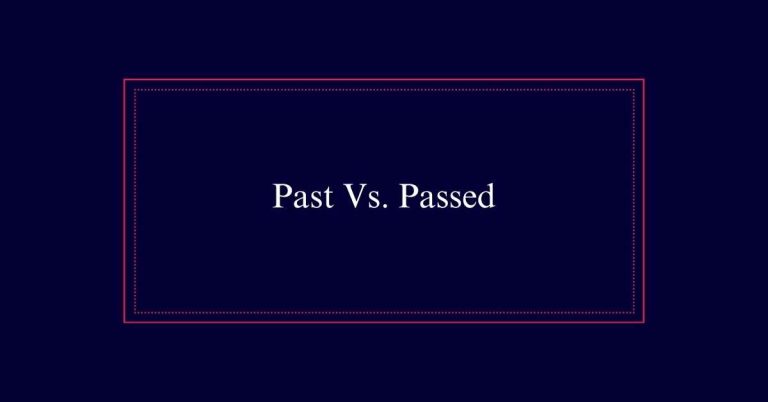Hoping Vs. Hopping
‘Hoping’ and ‘hopping’ are distinct despite sounding similar. ‘Hoping’ is derived from the verb ‘hope,’ expressing a desire or expectation. It carries an emotional tone and describes an ongoing feeling. On the other hand, ‘hopping’ comes from the verb ‘hop,’ referring to small, quick jumps. It involves physical movement, often seen in actions of children or animals. Remember, ‘hopping’ follows the C-V-C (consonant-vowel-consonant) rule, requiring the doubling of the final consonant.
Understanding Present Participles
Present participles are verb forms that end in -ing and play a critical role as adjectives or to create continuous tenses. They are versatile components in English grammar, enabling descriptions and ongoing actions.
For instance, in the phrase “the running water,” “running” is a present participle acting as an adjective. In continuous tenses, present participles convey actions in progress, such as in “She is running.” Understanding the role of present participles is essential for mastering English.
They appear in various contexts and promote precise communication. Distinguishing between similar-sounding participles like “hoping” and “hopping” involves recognizing their root verbs and intended meanings, which prevents common errors and enhances writing clarity. This foundational knowledge aids in effective language use.
The Verb ‘Hope’
The verb ‘hope’ conveys a sense of expectation or desire for a particular outcome. It is often used to express an optimistic belief or wish that something will happen.
For example, one might say, ‘I hope the weather is nice tomorrow,’ indicating a desire for favorable conditions. The verb ‘hope’ can be employed in various tenses, such as ‘hopes,’ ‘hoped,’ and ‘hoping,’ to fit different contexts.
‘Hoping’ is the present participle form that is used in continuous tenses, as in, ‘She is hoping for a promotion.’ This verb often carries an emotional or aspirational tone, reflecting the speaker’s personal wishes or expectations.
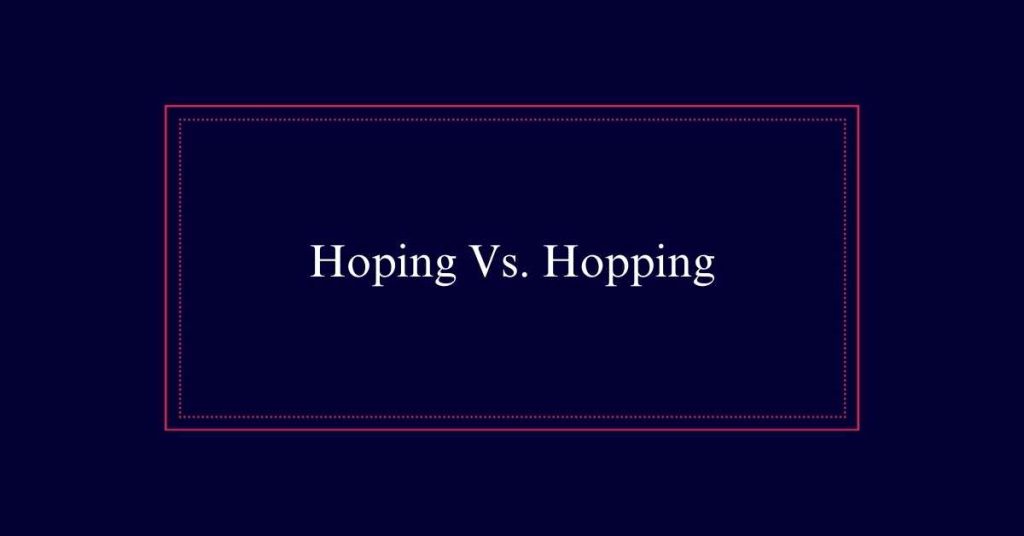
It is important to use ‘hope’ correctly to convey the intended meaning effectively.
The Verb ‘Hop’
While ‘hope’ deals with expectations, ‘hop’ is all about movement. The verb ‘hop’ means to make a small jump, often on one foot. It is a straightforward action verb used to describe quick, short movements. For instance, a rabbit hops across a field, or a child hops on one leg during a game.
In English, ‘hop’ follows the c-v-c rule, where the last consonant is doubled when forming the present participle ‘hopping.’ This makes it distinct from ‘hope,’ which does not follow this pattern.
Whether describing the playful action of animals or children, ‘hop’ is a verb that conveys a sense of lightness and agility. Understanding its proper use is essential for clear communication.
Progressive Tense Usage
In progressive tenses, both ‘hoping’ and ‘hopping’ describe ongoing actions. ‘Hoping’ expresses a continuous desire or expectation, while ‘hopping’ indicates repetitive small jumps. The progressive tense uses the ‘-ing’ form to show that an action is currently happening or ongoing.
Here’s a table to illustrate the differences:
| Verb | Example in Progressive Tense | Meaning |
|---|---|---|
| Hoping | She is hoping for good weather. | Desiring good weather continuously |
| Hopping | The rabbit is hopping around. | Making repeated small jumps |
| Hoping | They are hoping to win. | Expecting victory |
| Hopping | Kids are hopping in the park. | Jumping repeatedly |
| Hoping | He is hoping for a promotion. | Wishing for a promotion |
Small Jumps Explained
Hopping involves making quick, small jumps, usually in a playful or energetic manner. This action is often seen in children or animals, such as rabbits and kangaroos, who hop to move quickly.
In sports, hopping can refer to brief, repetitive jumps used in exercises or warm-ups. The word ‘hopping’ comes from the verb ‘hop,’ which means to jump lightly or bounce on one leg. It is distinct from ‘hoping,’ which involves anticipating a desired outcome.
Understanding the context in which ‘hopping’ is used helps avoid confusion. For example, ‘The child was happily hopping around the playground’ clearly describes physical movement, unlike ‘The child was hoping for a new toy,’ which indicates a wish or desire.
Applying the C-V-C Rule
Many verbs in English follow a simple rule called the c-v-c rule for determining their correct forms. This rule helps in identifying when to double the last consonant in a verb before adding a suffix.
The c-v-c rule stands for consonant-vowel-consonant. Here’s how it works:
- Identify the last three letters: Check if they follow the consonant-vowel-consonant pattern.
- Double the last consonant: If the pattern is c-v-c, double the final consonant before adding the suffix.
- Example with ‘hop’: ‘Hop’ becomes ‘hopping’ following the c-v-c rule.
- Example with ‘hope’: ‘Hope’ does not follow the c-v-c pattern, so it remains ‘hoping’.
Doubling the Last Consonant
Doubling the last consonant in verbs like ‘hop’ is an important principle for correct English verb conjugation.
When a verb ends in a consonant-vowel-consonant (C-V-C) pattern and is stressed on the last syllable, we double the final consonant before adding -ing or -ed.
This rule helps maintain the correct pronunciation and meaning of the verb.
For example, the verb ‘hop’ follows a C-V-C pattern. Hence, we double the ‘p’ to form ‘hopping’ and ‘hopped.’
This distinction is key because it differentiates between verbs like ‘hop’ and ‘hope,’ which do not follow the C-V-C pattern and thus remain ‘hoping’ and ‘hoped’ without doubling the consonant.
Real-World Examples
Real-world examples can illustrate the nuanced differences between ‘hoping’ and ‘hopping’ effectively. Consider these scenarios:
- Hoping: Sarah is hoping to get a promotion at work. Here, ‘hoping’ expresses her desire for a future event.
- Hopping: The rabbit is hopping across the field. In this case, ‘hopping’ describes the rabbit’s physical action.
- Hoping: John is hoping for good weather during his vacation. This use of ‘hoping’ indicates John’s wish or expectation.
- Hopping: The child is hopping on one foot. ‘Hopping’ here refers to the child making small jumps.
These examples clarify the distinct contexts in which ‘hoping’ and ‘hopping’ are used, showcasing their specific meanings.
Avoiding Common Mistakes
To avoid common mistakes, one must understand the distinct contexts in which ‘hoping’ and ‘hopping’ are used.
‘Hoping’ relates to the verb ‘hope’ and expresses a desire for a particular outcome. In contrast, ‘hopping’ derives from ‘hop’ and denotes making small jumps.
Remember, ‘hoping’ follows the standard spelling rules, while ‘hopping’ doubles the final consonant due to the c-v-c rule. Confusion often arises in the past tense forms—’hoped’ and ‘hopped.’
Practice using these words in correct contexts. For example, ‘She is hoping for good news,’ versus ‘The rabbit is hopping in the garden.’
